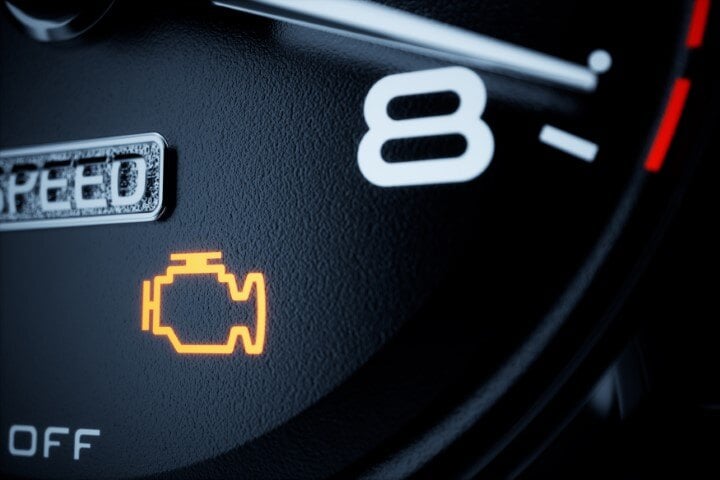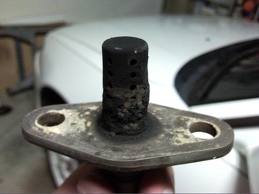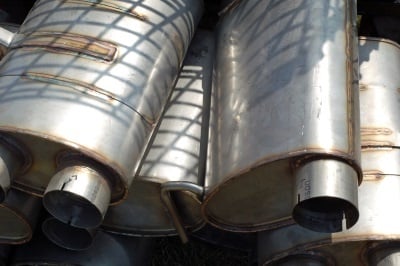Check Engine Light. Ethanol Gas. Is there a connection?
The check engine light is a commonly misunderstood piece of equipment on a car. The light comes on and the driver freaks out, thinking the vehicle is...
2 min read
Bell Performance : Nov 10 2011

All modern vehicles are equipped with computerized engine controls to reduce emissions and maximize fuel economy and performance. When oxygenates such as ethanol or methanol are added to gasoline, they can, at times, have a detrimental effect on all three of these areas. This is because ethanol and methanol will raise the oxygen level in the exhaust, causing false readings to the computer.
 The main purpose of the computer is to ensure the delivery of a 14.7:1 air/fuel ratio to the catalytic convertor. This is referred to as the “stoichiometric ratio” - the ideal ratio of air and atomized fuel to produce the best emissions possible (not the best performance for the engine). The computer uses an oxygen sensor located in the rear of each exhaust manifold, before the catalytic convertor. The oxygen sensor is actually a voltage generator that has an output of up to 1000mv. The output is based on whether the fuel/air mixture is rich or lean – whether there’s too much air or too little air in the mix. A voltage reading over 500mv is a rich mixture and a voltage reading below 500mv is a lean mixture. The computer will adjust the fuel injector pulse width which changes the amount of fuel entering each cylinder. The computer is programmed to maintain a 500mv reading, which will result in the 14.7:1 stoichiometric air/fuel ratio.
The main purpose of the computer is to ensure the delivery of a 14.7:1 air/fuel ratio to the catalytic convertor. This is referred to as the “stoichiometric ratio” - the ideal ratio of air and atomized fuel to produce the best emissions possible (not the best performance for the engine). The computer uses an oxygen sensor located in the rear of each exhaust manifold, before the catalytic convertor. The oxygen sensor is actually a voltage generator that has an output of up to 1000mv. The output is based on whether the fuel/air mixture is rich or lean – whether there’s too much air or too little air in the mix. A voltage reading over 500mv is a rich mixture and a voltage reading below 500mv is a lean mixture. The computer will adjust the fuel injector pulse width which changes the amount of fuel entering each cylinder. The computer is programmed to maintain a 500mv reading, which will result in the 14.7:1 stoichiometric air/fuel ratio.
Ethanol and methanol are highly corrosive to fuel system components; in vehicles not designed to use them, they can have a destructive effect on fuel system components. Ethanol and methanol both are hygroscopic and will absorb water from the surrounding air. When enough water is absorbed into the gasoline, it can actually displace gasoline being sprayed by the fuel injectors. This can cause a lean fuel mixture that is hot and can damage internal engine components.
When phase separation occurs with the absorption of water, the alcohol and water mixture sinks to the bottom of the fuel tank. The gasoline left above this mixture is then stripped of its octane. When this fuel is burned in the engine it will result in pre-ignition and the telltale knock or pinging sound. All modern computerized vehicles have a knock sensor that picks up this knocking sound and the computer will retard the ignition spark until it stops. Retarding the ignition timing reduces performance and fuel mileage.
Mix-I-Go, Mix-I-Go Small Engine, and Marine MXO (The Mix-I-Go family of products) are fuel treatments from Bell Performance that will prevent alcohol from combining with the water and the ensuing phase separation. Mix-I-Go is effective at coating fuel system components to protect them against the corrosive effects of ethanol and methanol. Mix-I-Go will also enhance octane in gasoline and eliminate the pre-ignition knocking and pinging sound it creates. Mix-I-Go keeps oxygen sensors clean and free of carbon deposits so they function properly, delivering the correct voltage readings to the computer. Performance, restored fuel mileage, and lower emissions are the result.
If you want more technical information on how oxygen sensors actually do their job, there's a great resource article on the topic: http://www.therangerstation.com/tech_library/O2Sensors.htm

The check engine light is a commonly misunderstood piece of equipment on a car. The light comes on and the driver freaks out, thinking the vehicle is...

Today, Bell's on-staff master mechanic James Dunst breaks down mechanic issues in your car that could be related to getting good gas mileage.

The first question is, can an exhaust leak cause a rough idle? When you have a rough idle situation and it's being attributed to an exhaust leak, it...